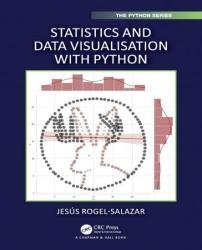Statistics and Data Visualisation with Python
- Добавил: literator
- Дата: 13-01-2023, 07:26
- Комментариев: 0
 Название: Statistics and Data Visualisation with Python
Название: Statistics and Data Visualisation with PythonАвтор: Jesus Rogel-Salazar
Издательство: CRC Press
Серия: The Python Series
Год: 2023
Страниц: 554
Язык: английский
Формат: pdf (true)
Размер: 14.3 MB
This book is intended to serve as a bridge in statistics for graduates and business practitioners interested in using their skills in the area of data science and analytics as well as statistical analysis in general. On the one hand, the book is intended to be a refresher for readers who have taken some courses in statistics, but who have not necessarily used it in their day-to-day work. On the other hand, the material can be suitable for readers interested in the subject as a first encounter with statistical work in Python. Statistics and Data Visualisation with Python aims to build statistical knowledge from the ground up by enabling the reader to understand the ideas behind inferential statistics and begin to formulate hypotheses that form the foundations for the applications and algorithms in statistical analysis, business analytics, machine learning, and applied machine learning. This book begins with the basics of programming in Python and data analysis, to help construct a solid basis in statistical methods and hypothesis testing, which are useful in many modern applications.
Python programming is a lot of fun. No wonder the language is becoming ever more popular and used in academic and commercial settings. As programming languages go, Python is versatile and with a very gentle learning curve. The emphasis it puts on readability and productivity does help its cause. As a
modern language, Python exploits the paradigms of object orientation and a lot can be said about this. However, we are not going to cover those aspects of the language here, instead we will concentrate on the basics that enable the use of programming in an interactive way.
In the Chapter 3 we are going to concentrate on a few that are useful in statistical analysis, namely NumPy, SciPy and Pandas. For other packages you may want to check the Python Package Index. In the rest of the book we will deal with a few of these modules and packages. One of the most useful packages in the Python ecosystem is NumPy. It stands for “numerical Python” and it is widely used as an important component for many other packages, particularly for data analysis and scientific computing. It provides functionality for multidimensional arrays that lists cannot even dream of executing. To get a feeling of the capabilities of NumPy, let us take a look at some of the computations we would like to perform. A typical case is the use of linear algebra, as matrix calculations can facilitate the implementation of suitable statistical analysis workflows and treatments. In that manner, the data analysis workflow, form processing to visualisation, benefits from the use of vectors and matrices. In Python we can define these as arrays.
Скачать Statistics and Data Visualisation with Python
Внимание
Уважаемый посетитель, Вы зашли на сайт как незарегистрированный пользователь.
Мы рекомендуем Вам зарегистрироваться либо войти на сайт под своим именем.
Уважаемый посетитель, Вы зашли на сайт как незарегистрированный пользователь.
Мы рекомендуем Вам зарегистрироваться либо войти на сайт под своим именем.
Информация
Посетители, находящиеся в группе Гости, не могут оставлять комментарии к данной публикации.
Посетители, находящиеся в группе Гости, не могут оставлять комментарии к данной публикации.
